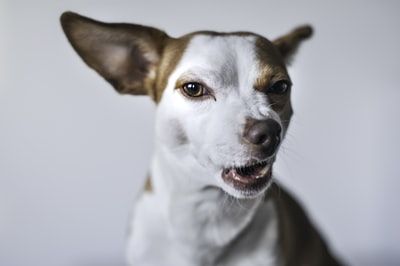
The more we know about dog bites and the more information we collect about them, the clearer the patterns are that emerge. For me, working in private practice on a daily basis with dogs who’ve bitten, there are two patterns that we could address simply and easily just by making very small changes in our own behaviour around dogs.
The first pattern that we could very simply address is to change our behaviour around on-site dogs. This shouldn’t be anything too difficult. Not one of us would go into a field with a rather lively, large bull, would we? Most of us would even think twice about going into a field with rams or goats. Yet statistics show us that many bites incurred relate to a very common scenario: a familiar human bitten by a large, adult dog when they encroach upon the dog’s home turf.
Common sense would tell us that we’d steer clear of dogs who are growling, barking or snarling if we don’t know them. The bigger the dog is and the more noise they’re making, the less likely we are to decide that it’d be a good idea to encroach on their territory.
But when it comes to dog bites, it seems confidence really does breed contempt. Many dog bites involve a person who knows the dogs but is not a family member coming into the area that the dog considers their own. Perhaps we know the dog’s name and we try to assuage them. Perhaps we are beguiled by the great relationship the dog has with their guardian. Maybe we think that our friends or acquaintances wouldn’t keep a truly savage dog? But for whatever reason, we ignore all the warning signs when we see angry dogs on their home ground and decide to go far closer than we would if we didn’t know the dog.
One of the best ways to change your behaviour is to consider how you would act if the dog really was an angry bull. Stop seeing the barky Shih Tzu and imagine a very large angry, cartoon-style bull, preferably stamping his feet, steaming from his nostrils. What would you do in this case? Steer clear, no doubt. Yet, more often than we should, we tell ourselves that ‘it’s just a dog’ and even rationalise it by telling ourselves dogs ‘shouldn’t’ behave like this, as if they’re in the wrong, not us.
From a species who’ve invented trespass laws, locks, CCTV and home invasion packages, a species who have very certainly benefited from keeping dogs to protect our territory, it seems a bit rich to judge dogs for valuing their home and passively accepting outsiders coming into their territory. If a person were to come in through my gates right now, open my door and come in without so much as a warning, most people would accept this to be an egregious violation of our space, our safety and our rights. Yet there aren’t many weeks that go by when I don’t get a call about a dog who barked at intruders, who growled when a neighbour came in for a coffee or who bit a delivery driver.
Of course, you can train your dog to accept strangers on the property. This is incumbent on puppy guardians, who need to make sure their dogs feel confident around strangers, particularly those who come onto the property. However, our dogs have a need to feel safe and to have their needs respected, so we should never trust socialisation or training alone when it comes to letting dogs greet guests or visitors, particularly on home ground. The easiest thing to do is keep the dog calm and quiet behind a locked door and then, when tensions are high, and to make sure that introductions are safe. After all, we wouldn’t expect an angry bull or our panicked guests to cope with one another, just hoping for the best. We wouldn’t say, ‘oh, he’ll calm down eventually!’ if our bull was standing in the corner, stamping his feet and eyeing our guests menacingly.
Imagining the angry bull can also help you with your own dog. I think this is particularly true if we keep small dogs. It can be so tempting to pick them up. Having owned two dogs who tipped the scales at 45kg, I can tell you that the tendency to lift, manipulate and grab a great big dog gives you a different view on how much you handle dogs. For guardians who ring me to help them with their own dog who’s become aggressive towards them, or even if their dog has bitten them, it’s often careless handling that has led to the worst problems.

